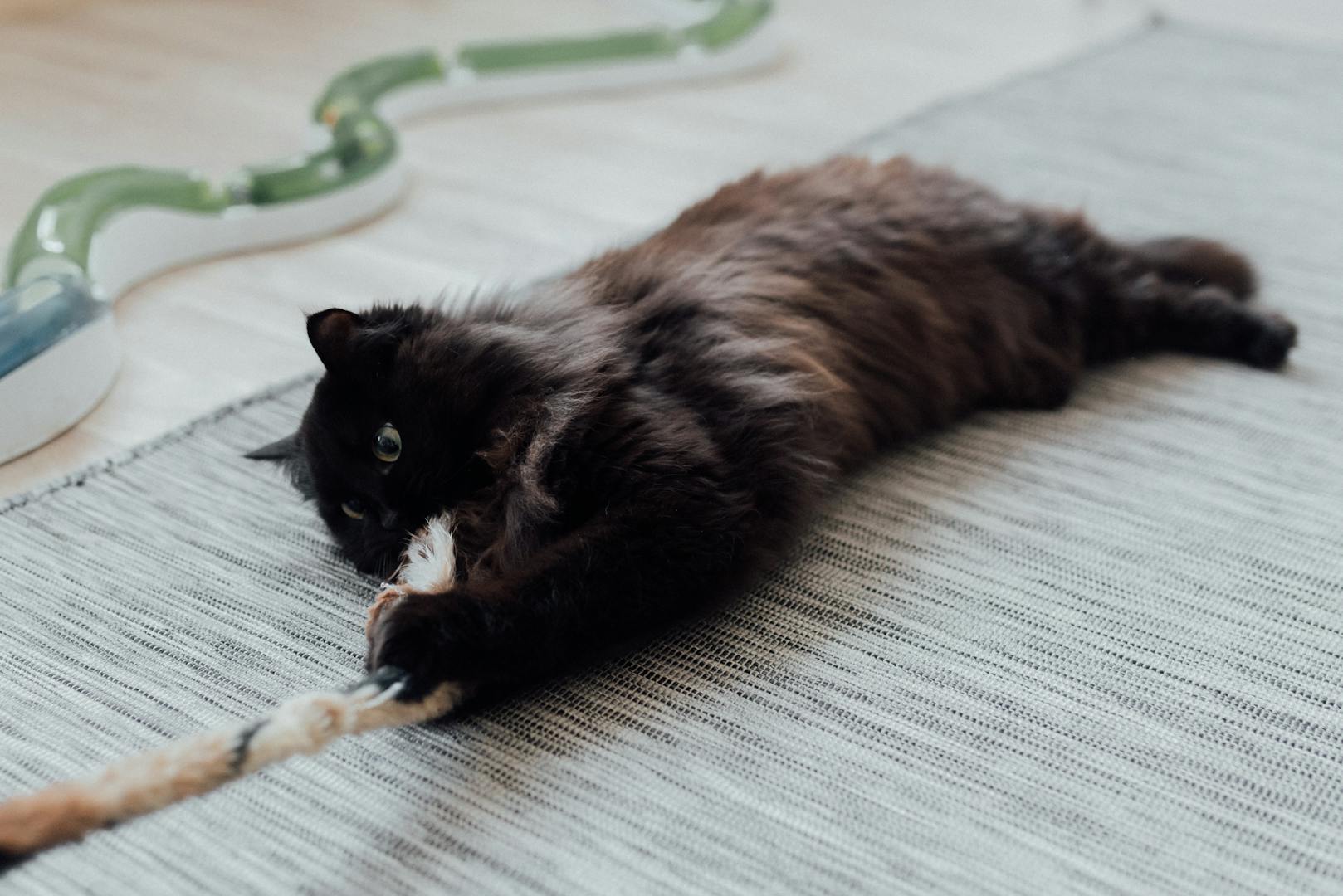Managing diabetes in cats requires more than just medication; it hinges on tailored feeding protocols that directly impact hypoglycemia control. This guide offers practical strategies to modify your cat’s diet, ensuring balanced nutrition while stabilizing blood sugar levels. Learn about portion sizes, timing, and types of food that can make a significant difference in your feline’s health. With the right approach, you can empower yourself to provide the best care for your diabetic cat, enhancing their quality of life and well-being.
Understanding Diabetes in Cats
Diabetes in cats, also known as feline diabetes, is a chronic condition that affects the body’s ability to produce or respond to insulin. This hormone is crucial for regulating blood sugar levels. When a cat develops diabetes, it can no longer effectively use glucose for energy, leading to elevated blood sugar levels. The main causes of diabetes in cats include obesity, genetics, and a sedentary lifestyle.
A voir aussi : Creative Solutions to Satisfy Your Cat”s Climbing Habits Indoors Without Wrecking Your Furniture
Recognising the signs and symptoms of diabetes in felines is essential for early diagnosis and management. Common symptoms include increased thirst and urination, weight loss despite a good appetite, and lethargy. If you notice any of these signs in your cat, it’s important to consult a veterinarian promptly.
Hypoglycemia, or low blood sugar, is a potential complication in diabetic cats, especially those undergoing insulin treatment. Symptoms of hypoglycemia can be subtle but may include weakness, confusion, and seizures. Understanding these hypoglycemia symptoms is crucial for pet owners managing a diabetic cat’s health.
Lire également : Creative Solutions to Satisfy Your Cat”s Climbing Habits Indoors Without Wrecking Your Furniture
Proper management of feline diabetes involves regular monitoring of blood sugar levels, a balanced diet, and consistent exercise. By staying informed and vigilant, cat owners can ensure their diabetic cats lead healthy and fulfilling lives.
Dietary Modifications for Diabetic Cats
Managing a diabetic cat’s diet is crucial in controlling the disease. A key aspect is selecting suitable food types, primarily low-carb options. Cats are obligate carnivores, and their natural diet is high in protein and low in carbohydrates. For diabetic cats, feeding protocols should focus on maintaining this balance to help regulate blood sugar levels effectively.
When choosing food for a diabetic cat, it’s essential to understand the importance of balanced nutrition. A diet rich in high-quality protein and low in carbohydrates can aid in managing diabetes. Such a diet helps to maintain stable blood sugar levels, reducing the risk of complications associated with the condition.
Reading pet food labels is a critical skill for cat owners. It’s important to look for foods specifically formulated for diabetic cats, often labeled as low-carb or high-protein. Avoid foods with high amounts of fillers like grains and sugars, as these can exacerbate blood sugar fluctuations.
In summary, the key to a successful diabetic cat diet lies in selecting the right food types, understanding the importance of balanced nutrition, and being diligent about reading pet food labels. By following these guidelines, cat owners can help ensure their feline companions lead healthier lives.
Portion Control and Feeding Schedules
Effective portion control and well-planned feeding schedules play a pivotal role in managing diabetes in cats. Determining the appropriate portion sizes for diabetic cats involves understanding their specific dietary needs. A veterinarian can provide personalized guidelines based on your cat’s age, weight, and overall health. Generally, smaller, more frequent meals are recommended to help maintain stable blood sugar levels.
Feeding Schedules
Establishing a consistent feeding schedule is crucial for stabilizing glucose levels in diabetic cats. Regular meal times help prevent spikes and drops in blood sugar, which can be detrimental to a diabetic cat’s health. It’s typically advised to feed diabetic cats at least twice a day, aligning meals with insulin administration if prescribed. This synchrony ensures that the insulin’s peak action coincides with the glucose influx from meals.
Role of Consistent Meal Timing
Consistent meal timing is essential in diabetes management. It helps the cat’s body anticipate food intake, aiding in smoother insulin regulation. Regular meal intervals prevent prolonged fasting, which can lead to hypoglycemia or other complications. By adhering to a structured feeding schedule, cat owners can significantly improve their pet’s quality of life while managing diabetes effectively.
Monitoring Glucose Levels
Monitoring blood glucose levels is a fundamental aspect of managing diabetes in cats. It involves regular blood glucose monitoring at home, which can be accomplished using various testing methods. These methods include using a glucometer, which is a device that measures glucose concentration in the blood. Pet owners can collect a small blood sample from the cat’s ear or paw pad to obtain a reading.
Keeping a detailed glucose log is vital for tracking the cat’s blood sugar levels over time. This log helps identify patterns and fluctuations, providing valuable insights into the effectiveness of the current management plan. It also aids veterinarians in making informed decisions regarding treatment adjustments.
Recognizing when to seek veterinary assistance is crucial. If the readings consistently fall outside the normal range, it may indicate that the current insulin dosage or dietary regimen needs adjustment. Additionally, if the cat exhibits symptoms such as extreme lethargy, vomiting, or seizures, immediate veterinary attention is necessary.
Regular blood glucose monitoring and maintaining a comprehensive glucose log empower cat owners to manage their pet’s diabetes effectively. By staying vigilant and proactive, owners can ensure their feline companions lead healthier, more stable lives.
Recognizing and Responding to Hypoglycemia
Understanding the symptoms of hypoglycemia in diabetic cats is crucial for effective hypoglycemia management. Typical signs include sudden weakness, confusion, unsteadiness, and in severe cases, seizures. These symptoms arise when blood sugar levels drop too low, necessitating prompt attention.
Immediate Actions During a Hypoglycemic Episode
If you observe these symptoms, it’s vital to act quickly. Administering a small amount of sugar, such as corn syrup or honey, can help raise blood sugar levels. Apply it to the cat’s gums, where it can be absorbed swiftly. Following this, contact your veterinarian immediately for further guidance on emergency response.
Long-term Strategies to Prevent Hypoglycemia
Preventative measures are key to avoiding future episodes. Regularly monitor your cat’s blood glucose levels and maintain a consistent feeding schedule. Adjustments in insulin dosage may be necessary, under veterinary supervision, to prevent blood sugar from dropping too low.
Consider discussing dietary changes with your veterinarian to ensure your cat’s nutritional needs are met without risking hypoglycemia. By implementing these strategies, cat owners can effectively manage their pet’s condition, ensuring a stable and healthy life.
Case Studies and Success Stories
Exploring diabetic cat success stories provides valuable insights into effective management strategies. Real-life examples highlight how dietary modifications can significantly impact a cat’s health. For instance, one case study involved a cat named Whiskers, whose owner implemented a low-carb, high-protein diet. This change led to more stable blood sugar levels and improved energy.
Testimonials from Cat Owners
Many cat owners share their experiences through interviews and testimonials, offering firsthand accounts of their journey. One owner, Sarah, expressed how switching to a prescribed diet helped her cat, Luna, regain vitality. She noted, “Luna’s transformation was incredible. The right food made all the difference.”
Lessons Learned in Management
These management case studies reveal crucial lessons. Consistency in feeding schedules and portion control emerged as key factors in maintaining stable glucose levels. Owners learned that regular monitoring and adapting to their cat’s needs were essential.
- Dietary Adjustments: Tailoring food choices to specific needs.
- Monitoring: Tracking blood glucose for informed decisions.
- Veterinary Guidance: Partnering with vets for optimal care.
By examining these real-life examples, cat owners can draw inspiration and practical advice, enhancing their ability to manage diabetes effectively.











